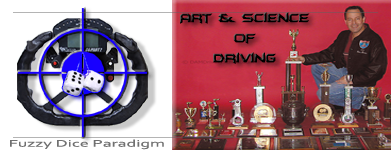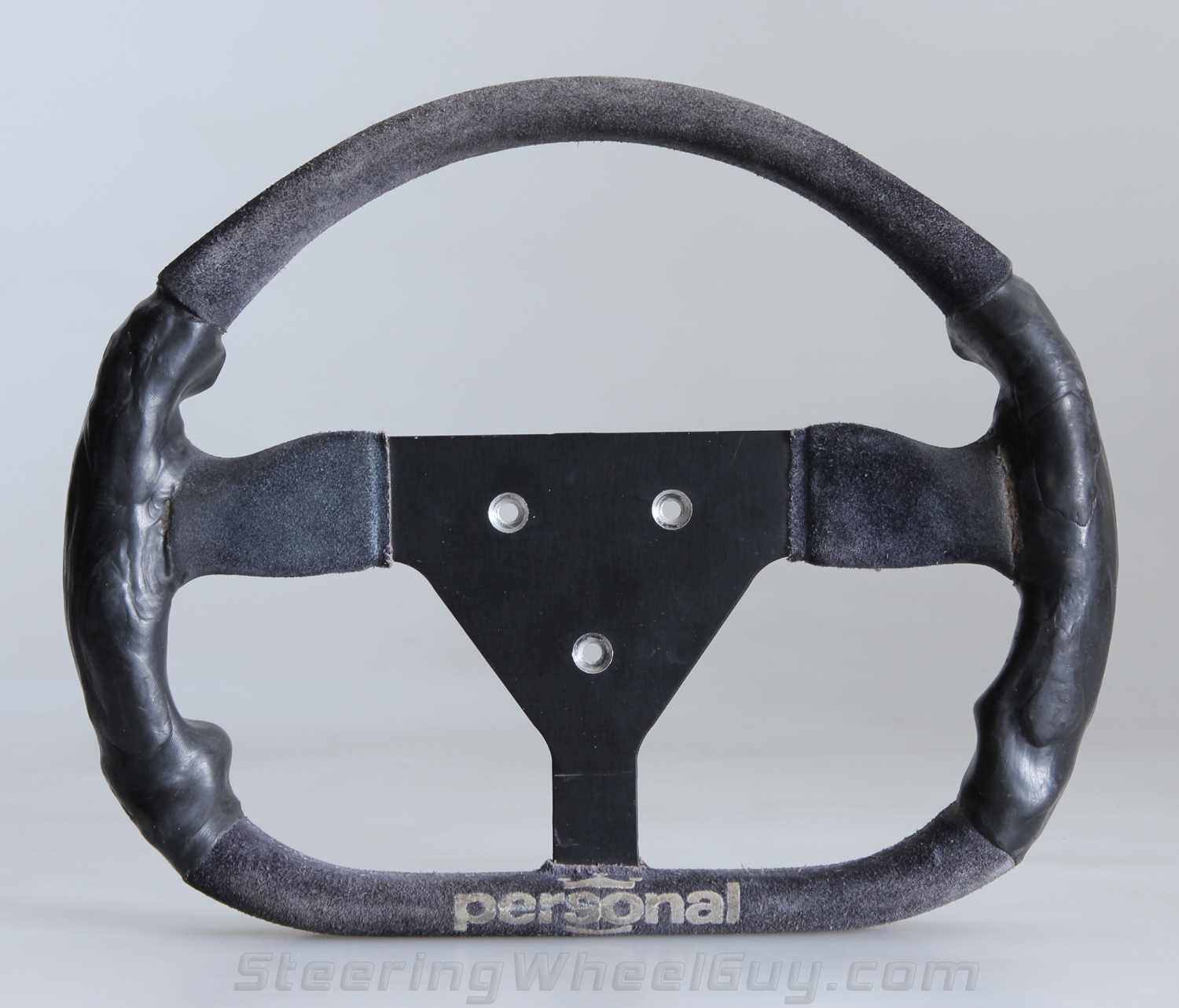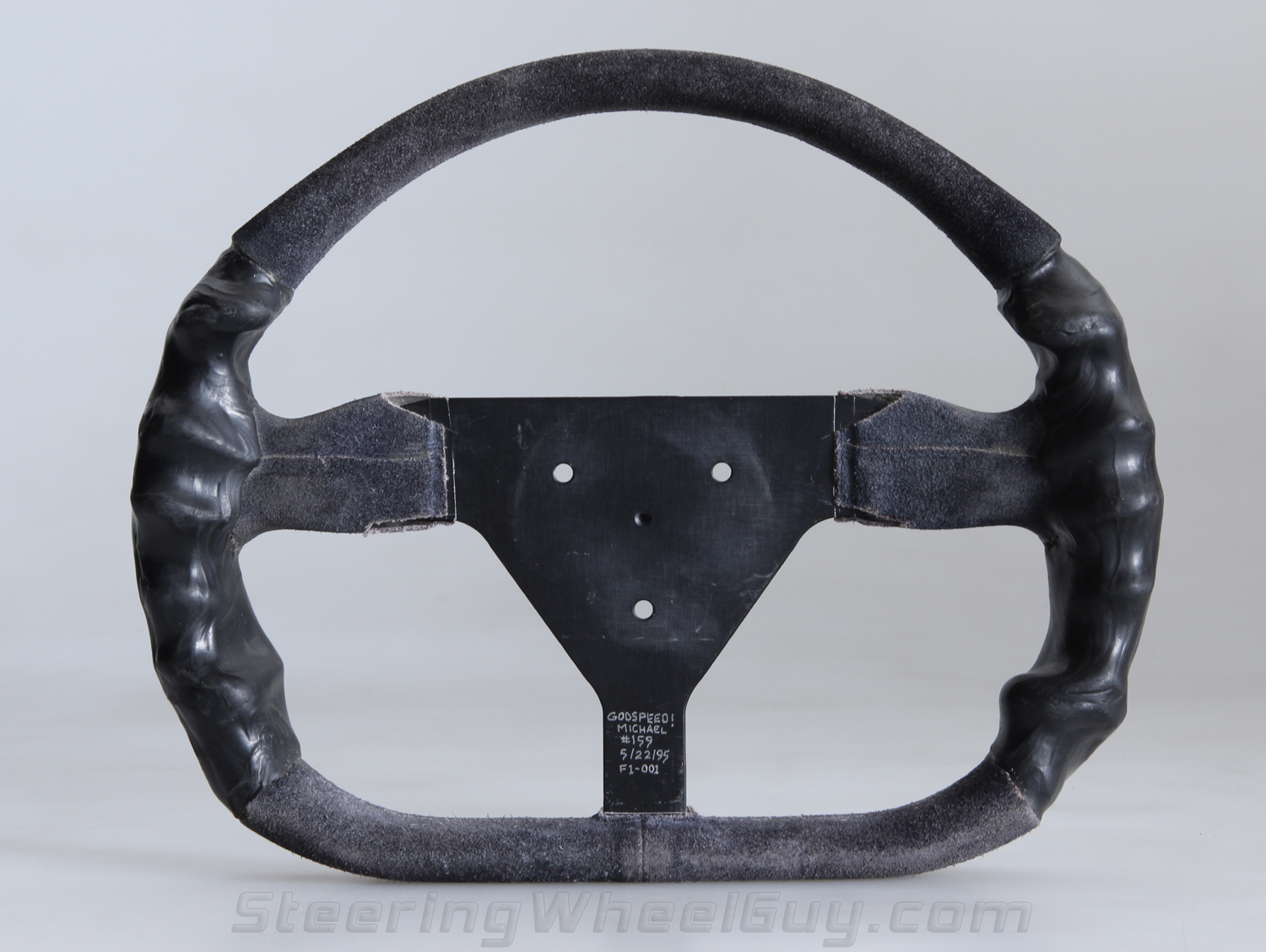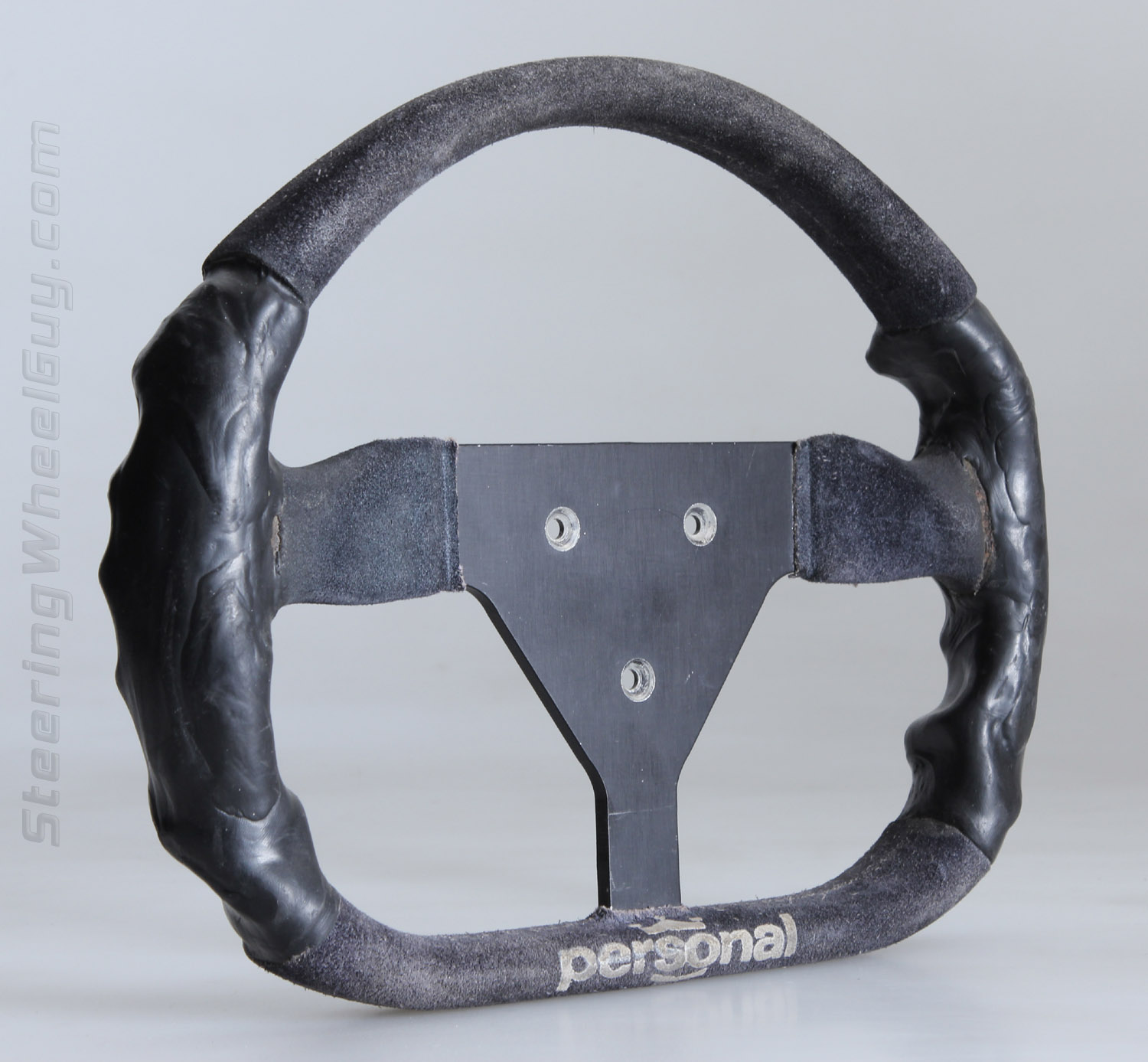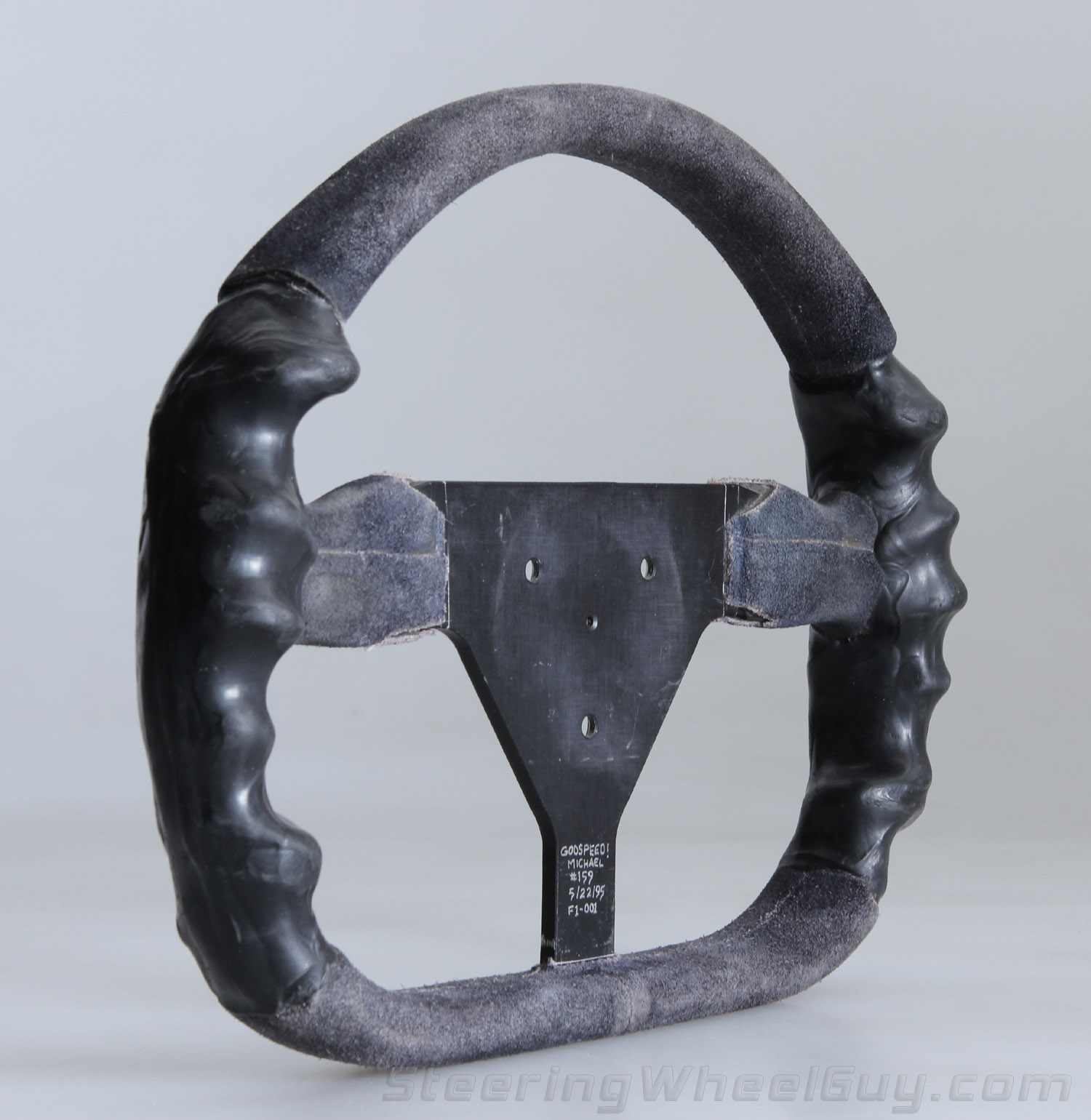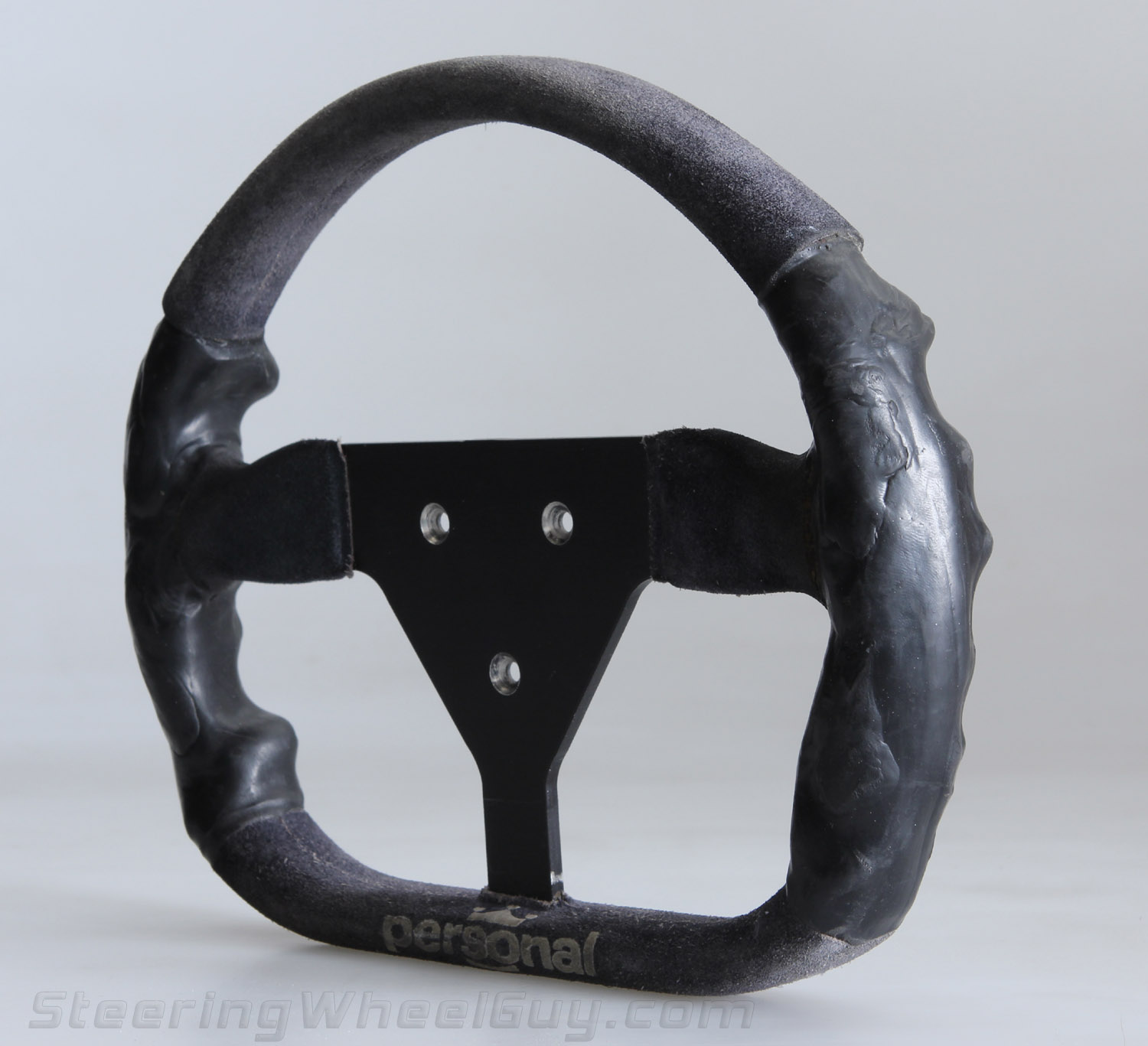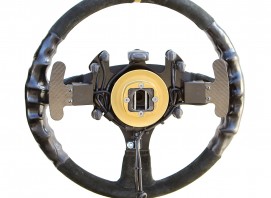Schumacher’s Benetton Steering Wheel Ser.#159-F1-001
NOTE: Ser.159/F1-001 pictured above is an early design that dates prior to developing various surface texturizing and embossing techniques used today to tailor each driver’s desired stick-slip characteristics.
Grip surface aesthetics have improved remarkably since then (see example …opens in new window)
Formula One’s First PersonaGrip Custom-Molded Steering Wheel — Ser.#159-F1-001
Under the careful guidance of Benetton‘s composites guru, Richard McAinsh, Dellis was persuaded to modify Michael Schumacher’s steering wheel Ser.# 159-F1-001 REMOTELY for the Monaco F1 Grand Prix in 1995. Never before had a steering wheel been modified without Dellis’ presence for the final fine-tuning.
Originally, Dellis was scheduled to be at Monaco so he could administer the fine tuning himself; however, after several days on the phone with Dellis, McAinsh was convinced that he could perform the fine-tuning himself.
First Touch
McAinsh reports that after heating only the top surface — to retain most of the integrity of its original design — Michael simply said, “It’s perfect”, and left just his fingerprints on the surface where traces remain today.
Michael won the Monaco F1 Grand Prix that weekend, and would later go on to win the F1 Formula One Championship using Ser.#159-F1-001.
Schumacher Palm Swells — A First in Steering Wheel Design
To determine the best initial molds, Dellis used faxed tracings of Schumacher’s hands, answers to questions over the phone, and careful analysis of hand movement using footage recorded on VHS tape(!) from his in-car cameras. Realizing the significance of that shipment, Dellis spent an entire three days sorting it until it was perfect.
During the design process, Dellis discovered what he now calls the Schumacher Palm Swells.
In the prior 158 steering wheel conversions, the palm areas developed naturally during the wing-design steps. However, Schumacher indicated that Monaco’s hairpin might require shuffle steering, so the wings remained “muted” on the outer circumference to allow for hand movement. This led Dellis to discover how empty the palm swells would feel without the wings’ natural “knurling effect.”
As a result, palm swells were plastic-welded onto four spots — top and bottom — on the front face of the wheel. While the visual aspect was compromised during the welds and subsequent shaping, the actual feel was sensational. So, it was shipped “as is”, and Schumacher’s fingerprints were the only addition.
The Tradition Continues…
With the aid of the Internet and action cameras, this remote design process pioneered by McAinsh and Schumacher is still in use today. See SteeringWheelGuy.com for more details.
